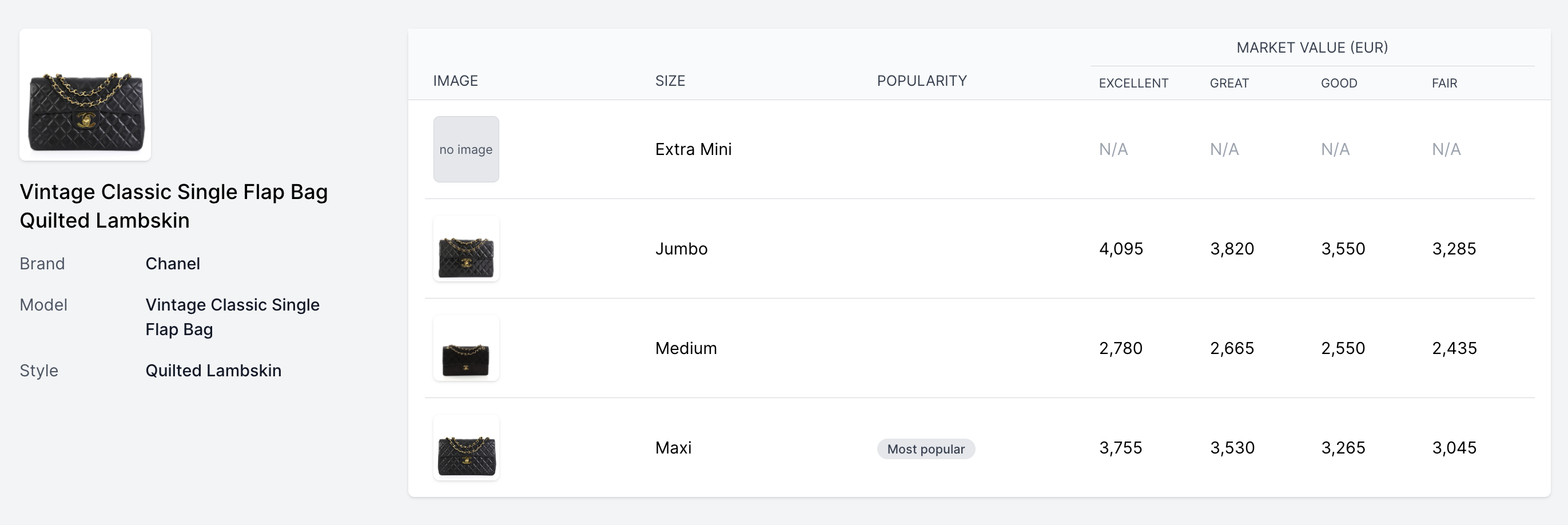
Introduction
The resale market has seen tremendous growth in recent years, with both North America and Europe emerging as significant players. This article delves into the key differences between these two markets, examining the types of marketplaces, product offerings, and pricing trends.
Market Structure
The resale market is comprised of two major types of marketplaces:
1. P2P (Peer-to-Peer) Marketplaces: Platforms where individuals sell directly to each other. Notable examples include eBay and Vinted. These marketplaces thrive on the direct interaction between sellers and buyers, often offering a wide variety of products at competitive prices.
2. Managed Marketplaces: Platforms that handle the listing, selling, and shipping process for the seller. Examples include The RealReal, Rebag, Fashionphile. These marketplaces provide a more curated and seamless experience for both sellers and buyers, often ensuring the authenticity and quality of the products.
Market Dynamics in North America
Key players in the North American market include eBay, Poshmark, and The RealReal. P2P marketplaces such as eBay and Poshmark dominate the luxury handbag sector, accounting for approximately two-thirds of the total listings. Specifically, eBay and Poshmark together represent about one-third of the market each, thus covering half of the P2P marketplace sector. Managed marketplaces, therefore, hold the remaining one-third of the luxury handbag market. The RealReal, a significant player in the managed marketplace category, represents nearly a quarter of this segment by volume.
The diversity of P2P marketplaces is notable; despite being fewer in number compared to managed marketplaces, their reach and user engagement are substantial. Managed marketplaces, on the other hand, offer a more tailored experience and differ in their business models. Some provide consignment options, others offer buyouts or store credits in exchange for pre-owned items, and some combine these methods. Both marketplace types see customers exploring multiple platforms before making a sale or purchase decision.
Market Dynamics in Europe
The European market features key players such as Vinted, Depop, and Vestiare Collective. In this region, P2P marketplaces are predominately more influential, representing approximately 80% of the listings for pre-owned luxury handbags. This leaves only 20% of the market to managed marketplaces. The options for managed marketplaces in Europe are fewer than in North America.
However, this landscape is expected to evolve as brands and retailers increasingly enter the resale industry by developing their own resale operations. This trend is observed across multiple verticals and brands in both North America and Europe. In Europe, more managed marketplaces are anticipated to acquire their customers with consignments and buyout models rather than relying on wholesalers and other inventory acquisition channels.
Popularity and Pricing Trends
For both the North American and European resale markets for luxury handbags, Louis Vuitton, Chanel, and Gucci reign as the most popular brands. However, the dynamics shift when examining other luxury brands. Fendi enjoys greater popularity in Europe than in North America, whereas the opposite trend is observed for Hermès and Prada. Despite these differences, the overall popularity of these brands is moderately consistent across both markets.
Analyzing our comprehensive dataset, we observed that European prices for luxury handbags are, on average, $430 USD cheaper than their North American counterparts. Specifically, the average price point in Europe stands at $1,810 USD, compared to $2,240 USD in North America. The median prices also reflect this trend, with Europe at $1,095 USD and North America at $1,200 USD, indicating a generally higher price trend in the latter market.
These price differences can be attributed to a variety of factors, including differing levels of brand popularity, consumer demand, and market dynamics. For instance, consider the Louis Vuitton Neverfull Tote Damier. By analyzing thousands of data points from both North American and European markets and converting prices to the same currency, it becomes evident that the European market consistently offers lower prices across all three variants (GM, MM, PM). On average, these bags are approximately $100 USD less expensive in Europe for each condition.


*Trendful Price Database Data from June 2024
Similarly, examining the Chanel Vintage Classic Single Flap Bag in Quilted Lambskin highlights the disparity in prices between the two regions. For the Jumbo, Medium, and Maxi variants, the North American prices are consistently higher. The Jumbo variant, for example, shows a significant difference with North American prices being over $1,000 USD more than in Europe across various conditions.


*Trendful Price Database Data from June 2024
Such price discrepancies can be attributed to several factors, including variations in consumer demand, regional pricing strategies, and market conditions. Additionally, taxes and local economic factors can play a crucial role in determining the final prices in these markets. For example, when purchasing from a marketplace based in the United States, you will be subject to additional taxes.
Conclusion
While P2P marketplaces dominate in both regions, managed marketplaces offer unique advantages and are poised for growth. This study includes vendors that sell domestically and internationally and focus on pre-owned luxury handbags, reflecting broader trends in the global resale market.
Our analysis reveals a notable pricing trend: European resale markets for luxury handbags tend to offer lower prices compared to the North American market. Understanding these pricing trends is crucial for both buyers and sellers in the luxury handbag resale market. Buyers can leverage this information to make cost-effective purchases, while sellers can adjust their pricing strategies to align with market trends and consumer expectations.
Overall, the global resale market for luxury handbags is influenced by complex factors, including marketplace types, regional preferences, and economic conditions. As managed marketplaces continue to grow, they may further influence these trends by providing standardized pricing and broader market access.